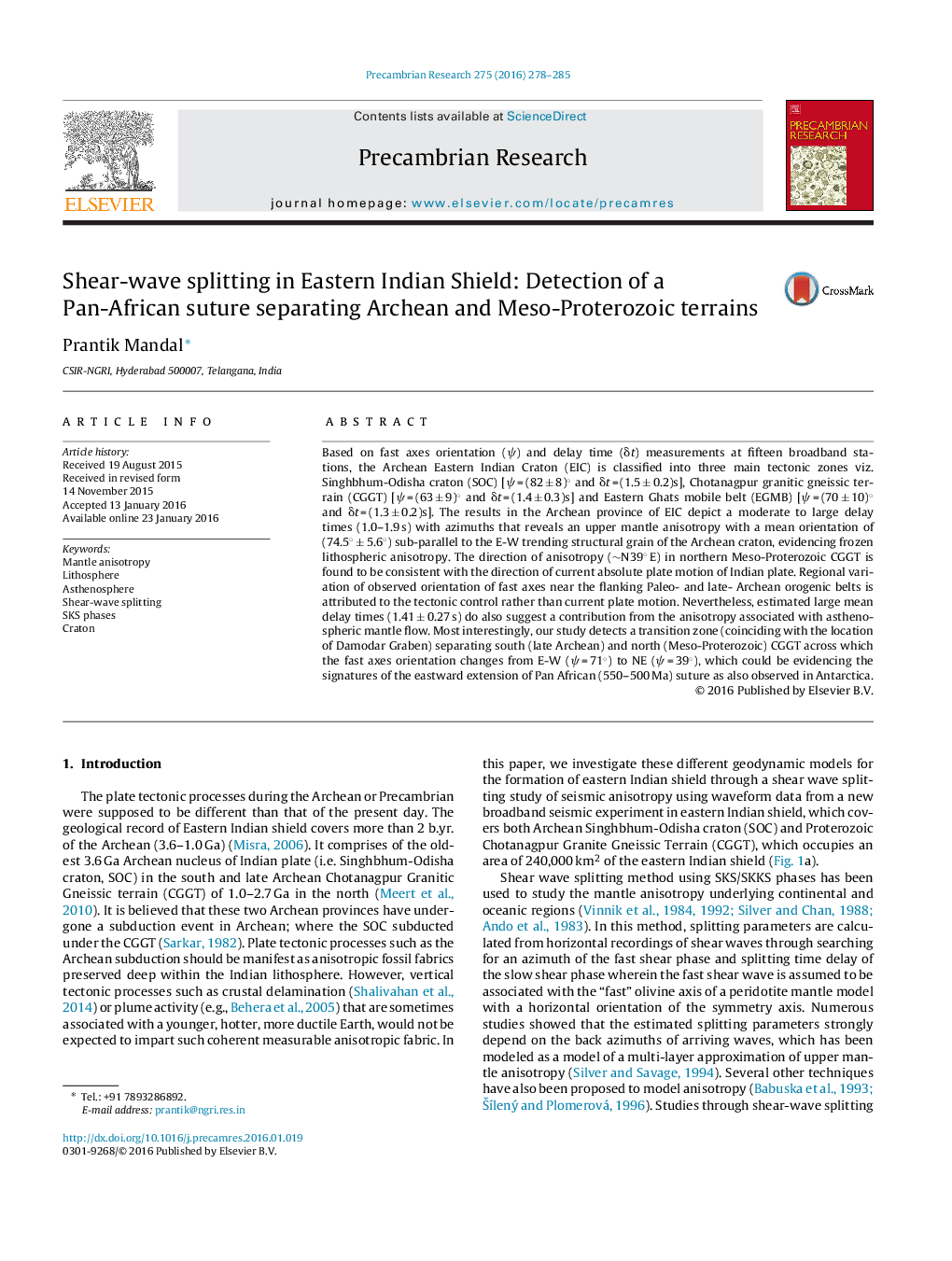| کد مقاله | کد نشریه | سال انتشار | مقاله انگلیسی | نسخه تمام متن |
|---|---|---|---|---|
| 4722376 | 1639600 | 2016 | 8 صفحه PDF | دانلود رایگان |

• SKS splitting parameters (ψ and δt) are computed for Eastern Indian Shield.
• The mean ψ and δt for EIC are estimated to be 63° and 1.4 s, respectively.
• Mantle anisotropy in EIC is attributed to frozen Archean lithospheric anisotropy.
• Detection of a Pan-African suture separating Archean and Proterozoic terrains.
• δt = 1.4 s do suggest a contribution from anisotropy due to athenospheric flows.
Based on fast axes orientation (ψ) and delay time (δt) measurements at fifteen broadband stations, the Archean Eastern Indian Craton (EIC) is classified into three main tectonic zones viz. Singhbhum-Odisha craton (SOC) [ψ = (82 ± 8)° and δt = (1.5 ± 0.2)s], Chotanagpur granitic gneissic terrain (CGGT) [ψ = (63 ± 9)° and δt = (1.4 ± 0.3)s] and Eastern Ghats mobile belt (EGMB) [ψ = (70 ± 10)° and δt = (1.3 ± 0.2)s]. The results in the Archean province of EIC depict a moderate to large delay times (1.0–1.9 s) with azimuths that reveals an upper mantle anisotropy with a mean orientation of (74.5° ± 5.6°) sub-parallel to the E-W trending structural grain of the Archean craton, evidencing frozen lithospheric anisotropy. The direction of anisotropy (∼N39° E) in northern Meso-Proterozoic CGGT is found to be consistent with the direction of current absolute plate motion of Indian plate. Regional variation of observed orientation of fast axes near the flanking Paleo- and late- Archean orogenic belts is attributed to the tectonic control rather than current plate motion. Nevertheless, estimated large mean delay times (1.41 ± 0.27 s) do also suggest a contribution from the anisotropy associated with asthenospheric mantle flow. Most interestingly, our study detects a transition zone (coinciding with the location of Damodar Graben) separating south (late Archean) and north (Meso-Proterozoic) CGGT across which the fast axes orientation changes from E-W (ψ = 71°) to NE (ψ = 39°), which could be evidencing the signatures of the eastward extension of Pan African (550–500 Ma) suture as also observed in Antarctica.
Journal: Precambrian Research - Volume 275, April 2016, Pages 278–285